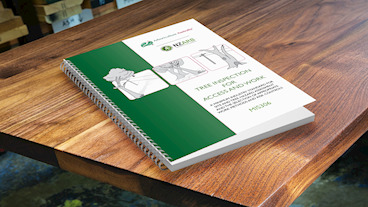
Tree Inspection for Access and Work - Minimum Industry Standards Booklet (MIS306)
or 4 interest-free payments with Paypal Pay in 4.
Limited Stock Available
Arboriculture Australia Minimum Industry Standards Booklet - Tree Inspection for Access and Work MIS306
The MIS306 Tree Inspection for Access and Work booklet is an essential resource for arboriculture professionals, providing detailed guidance on site and tree inspection tasks prior to tree work operations. This industry peer-reviewed standard ensures a methodical and thorough approach to hazard inspection, crucial for safe tree work.
Key Features
- Comprehensive Inspection Process: The booklet outlines a straightforward, easy-to-follow process for consistent and thorough site and tree inspections.
- Hazard Identification: Includes a list of common tree hazards and techniques for assessing their severity, as well as methods for working with compromised trees.
- Foundation for Further Learning: The techniques presented form a solid foundation for practitioners to build upon, with additional standards covering tree identification, access methods, and techniques for pruning and removing trees.
Practical Applications
- Safety Assurance: Ensure safe tree work operations through careful and methodical hazard inspection.
- Training Tool: Use the booklet to train new staff members on industry-standard inspection techniques.
- Standardized Procedures: Implement standardized inspection procedures across your team to maintain consistency and safety.
National Standard
The MIS306 Tree Inspection for Access and Work booklet serves as the National Minimum Industry Standard for tree inspection in Australia and New Zealand. It is part of a series of Minimum Industry Standards produced by Arboriculture Australia Ltd in consultation with the national arboriculture community. These standards cover the skills and equipment that competent practitioners should be familiar with.
By adhering to the guidelines and procedures outlined in the MIS306, arboriculture practitioners can enhance their inspection skills, improve safety, and ensure compliance with industry best practices.

